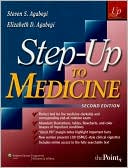Category Books
- Fiction Books & Literature
- Graphic Novels
- Horror
- Mystery & Crime
- Poetry
- Romance Books
- Science Fiction & Fantasy
- Thrillers
- Westerns
- Ages 0-2
- Ages 3-5
- Ages 6-8
- Ages 9-12
- Teens
- Children's Books
- African Americans
- Antiques & Collectibles
- Art, Architecture & Photography
- Bibles & Bible Studies
- Biography
- Business Books
- Christianity
- Computer Books & Technology Books
- Cookbooks, Food & Wine
- Crafts & Hobbies Books
- Education & Teaching
- Engineering
- Entertainment
- Foreign Languages
- Game Books
- Gay & Lesbian
- Health Books, Diet & Fitness Books
- History
- Home & Garden
- Humor Books
- Judaism & Judaica
- Law
- Medical Books
- New Age & Spirituality
- Nonfiction
- Parenting & Family
- Pets
- Philosophy
- Political Books & Current Events Books
- Psychology & Psychotherapy
- Reference
- Religion Books
- Science & Nature
- Self Improvement
- Sex & Relationships
- Social Sciences
- Sports & Adventure
- Study Guides & Test Prep
- Travel
- True Crime
- Weddings
- Women's Studies
Step-up to Medicine » (2nd Edition)

Authors: Steven S. Agabegi, Elizabeth D. Agabegi
ISBN-13: 9780781771535, ISBN-10: 0781771536
Format: Paperback
Publisher: Lippincott Williams & Wilkins
Date Published: April 2008
Edition: 2nd Edition
Author Biography: Steven S. Agabegi
Book Synopsis
This book is a primary review tool to prepare students for both the internal medicine clerkship and the end-rotation NBME shelf examination. This logical alternative to several limited-focus books blends a bullet-outline format students prefer in a review book with comprehensive paragraphs, as needed, for optimal preparation. Illustrations, charts, tables, graphs, mnemonics, and "Quick Hits" pearls for the clerkship speed and supplement learning. Ample content without superfluous detail enables students to readily evaluate and expand their knowledge of cardiology, pulmonary medicine, gastroenterology, hematology, neurology, endocrinology, rheumatology, nephrology, genitourinary disorders, fluids and electrolytes, dermatology, and musculoskeletal problems.
A new section in this Second Edition presents 100 USMLE-style clinical vignette-based questions with answers. A color insert contains over thirty full-color images.
A companion Website will offer the fully searchable text and color photographs.
Doody Review Services
Reviewer:Matthew Sutton, BS(University of Iowa Carver College of Medicine)
Description:This broad overview of basic topics in internal medicine, delivered primarily in outline form with some tables, charts, figures, and algorithms, is aimed at third year medical students. This is an update of the first edition published in 2005.
Purpose:It is designed to be used by third year medical students during their internal medicine clerkship as a study tool for the rotation and in preparation for the NBME shelf examination. There are few, if any, study aids that are extensive enough to cover the breadth of internal medicine, yet concise enough to be read in their entirety during the clinical rotation. In that sense, the authors have succeeded in creating a study tool that meets these objectives.
Audience:Although designed for third year medical students, the book could be a useful study tool for anyone wanting to quickly brush up on a topic, including fourth year medical students and medical school graduates preparing to start their internships. While the authors have provided relatively comprehensive and accurate information, neither of them was a medical school graduate when they wrote the book, and neither is engaged in a training program in internal medicine. Given their career choices of orthopedics and ophthalmology, I find them to be unlikely -- though not necessarily unqualified --candidates for authors of a book on internal medicine.
Features:The book covers all major topics in internal medicine and is organized by organ system/specialty. It includes chapters on neurology and dermatology though these are not strictly internal medicine specialties. The final chapter on ambulatory medicine deals with common outpatient problems and presentations. The book uses a concise outline format, varied with tables, charts, and algorithms, and is effective in conveying the information. High-yield facts labeled "Quick Hits" that appear in the margins tend to be pertinent and likely fodder for "pimping" on rounds. A set of color plates is included. The appendix is a practical guide for interpreting various diagnostic tests such as x-rays and EKGs, and management of common inpatient issues including an extensive section on antibiotic selection. Because this information is seldom covered in a book and more often learned by osmosis during the clerkship, the appendix stands out as a valuable resource. Finally, the book includes 100 non-multiple choice practice cases, most of which ask the question, "What is the next step in management?" Answers are provided with a short discussion of each question.
Assessment:Overall, this is a valuable book and I would have found it useful during my internal medicine clerkship. The information is concise, yet complete, and focuses on the information that third year students need to know to fulfill their role. The information is extensive, but the book can easily be read during the clerkship. The outline format separates this from books such as those in the Blueprints series. For those who enjoy the outline format, this is a good choice.
Table of Contents
Subjects
 Medicine
Medicine  Clinical Medicine
Clinical MedicineMedical Books
 Medicine
Medicine  Reference - Medicine
Reference - MedicineMedical Books
 Medicine
Medicine  Test Prep & Review - Medicine
Test Prep & Review - MedicineNonfiction
 Medicine
Medicine  Medicine
Medicine
